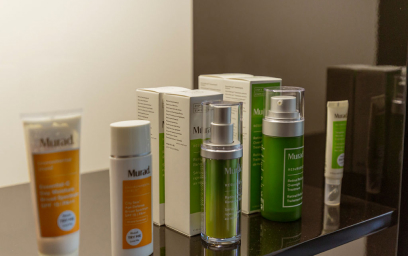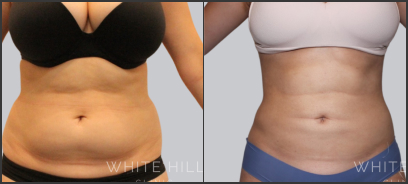Saline vs Silicone Implants: Which Is Better?
Last updated on September 5, 2024
More and more people are deciding now is the time to finally schedule their breast augmentation surgery. Over 8,000 Australians chose to enhance their bodies with breast augmentation surgery last year.
The way we think about breast augmentation (or boob jobs, as they are colloquially known) has changed dramatically as more and more people enjoy the benefits of the procedure.
One thing that hasn’t changed is the materials used. In the evolving world of cosmetic surgery, you still have two options: silicone or saline.
Are you thinking aboutbreast augmentation and can’t decide between saline vs silicone implants? Keep reading for an introductory guide to the materials that can be used in this procedure.
Saline Implants: Pros and Cons
Saline-filled implants are implants filled with sterile salt water. When you get saline implants, your surgeon places a silicone shell into your body and then loads the shell with the saline fluid required to reach the volume and fullness you want from your breasts.
Pros of Saline
Patients undergoing breast reconstruction are more likely to choose saline implants because it’s possible to adjust some types even after the surgery is complete.
A surgeon can post-operatively adjust the volume of fluid using a remote injection port. When you reach the right/desired volume after several months, the surgeon then removes the port.
Cons of Saline
The characteristic of saline implants that is most likely to spark a reaction is the feeling of the implants. In some cases, like when the recipient has very thin skin or less existing breast tissue, it is easier to see or feel the folds of a saline implant.
Being able to see or feel an implant is known as “wrinkling.”
Like all types of implants, saline implants post risks including:
- Scar tissue
- Temporary changes in breast and nipple sensation
- Implant rupture or leaks
- Infection
Even though implant quality has changed, saline implants still have a shorter average duration of rupture. A study showed that rupture was diagnosed at a mean of 5.6 years after surgery compared to 12 years for silicone implants.
However, saline implant rupture is safer and r to diagnose. Additionally, while rupture is more common in saline implants, it is less dangerous. Your body can absorb the saline from your implants safely.
Silicone Implants: Pros and Cons
Silicone implants are made of an inert polymer gel that’s suitable for long-term use in the human body.
Although we tend to think of silicone implants as one thing, they come in varying degrees of stiffness, which is a result of the cohesiveness of the silicone modules. If you’re in search of a standard breast augmentation, you’ll usually choose a soft silicone that flows well.
Women who choose a post-mastectomy breast reconstruction are more likely to use a firmer silicone to support their breast shape.
Pros of Silicone
Why do many people choose silicone?
Silicone flows differently within the implant shell. And because it isn’t a water-based solution, it is less viscous. That means that silicone implants feel more ‘natural’ or closely akin to naturally-occurring breast tissue.
The risk of spontaneous rupture or leaking is also lower compared to saline implants and older versions of silicone implants. Additionally, if there is an issue, you won’t lose your breast shape as you do with saline implants.
Cons of Silicone
Although silicone implants are less likely to leak, it’s harder to detect when they do. Unlike saline, silicone implants hold their shape. As a result, those with silicone implants should schedule an MRI and check for defects at least every two years.
Additionally, silicone implants go in whole rather than shell first. As a result, the surgeon must make a larger incision to put the implant in place. You’re more likely to see more significant scarring with silicone implants as a result of the larger incision.
Saline vs Silicone Implants: How to Choose
Those looking for breast reconstruction have fewer choices and will generally stick to a set list of products, but they can choose whether saline or silicone best suits them.
If you’re interested in standard breast augmentation to complement your existing breast tissue, your decision will come down to factors that include:
- Natural breast size
- Desired size
- Budget
- Incision
- Surgeon recommendations
Those adding implants to complement their current breast size will find that silicone implants work best for women with smaller breasts. Your breast tissue helps prevent wrinkling (seeing and feeling the implant), so the more mass you have, the less likely you are to see or feel the implant.
If you have enough existing breast tissue to cover the saline, then you might be well-suited to either.
People who are looking for a more dramatic look or a significant increase in breast size may appreciate the appearance of saline. Saline allows you to adjust the shape, and are better suited to dramatic changes. Silicone implants are better suited to increases by no more than a few cup sizes.
What’s your budget? Saline implants are usually more budget-friendly than silicone. If you are on the fence, the total cost of the procedure may land you on the side of saline.
Are you someone who is worried about a visible incision? Saline implants typically come with smaller incisions compared to silicone.
Ultimately, you should make your decision in consultation with a licensed plastic surgeon who has had a chance to examine your chest and make an informed opinion.
As you make your decision, remember implants won’t cure droopy breasts. If you want to make a drastic change to the shape of your breasts, you may also need a breast lift in addition to your augmentation procedure.
What Will You Choose?
Vast improvements in implant technology resulted in more durable and more natural looking implants than ever before. There are pros and cons to both types of implants, but those often depend on what factors are most important to you.
Are you making the decision between saline vs silicone implants? We recommend a professional opinion. Get in touch today to learn more about your potential breast augmentation procedures.










